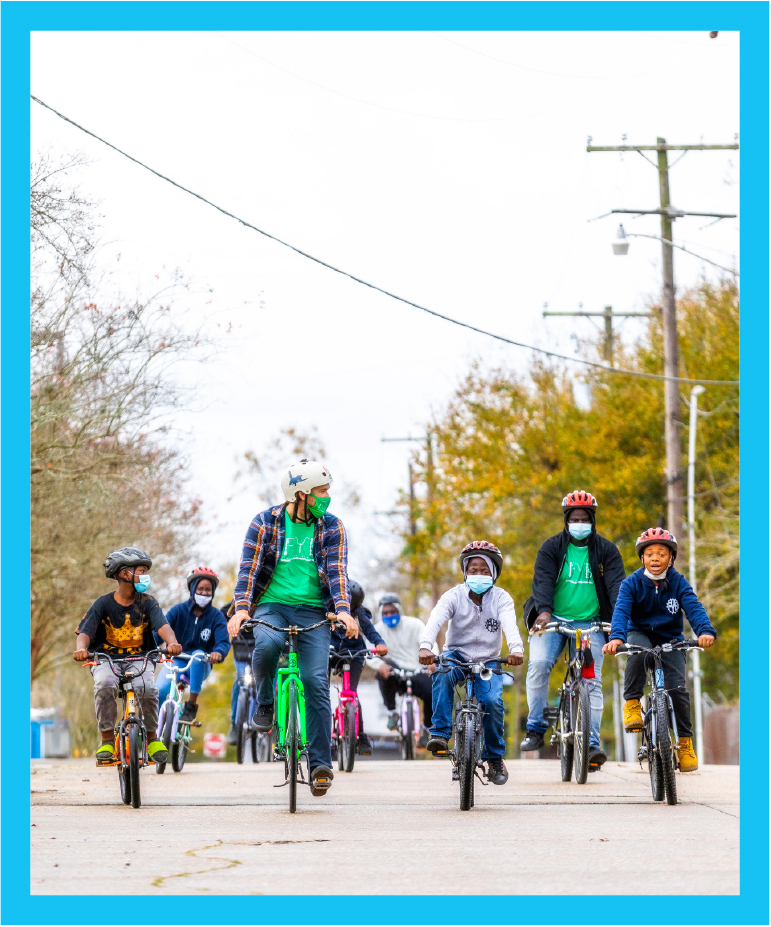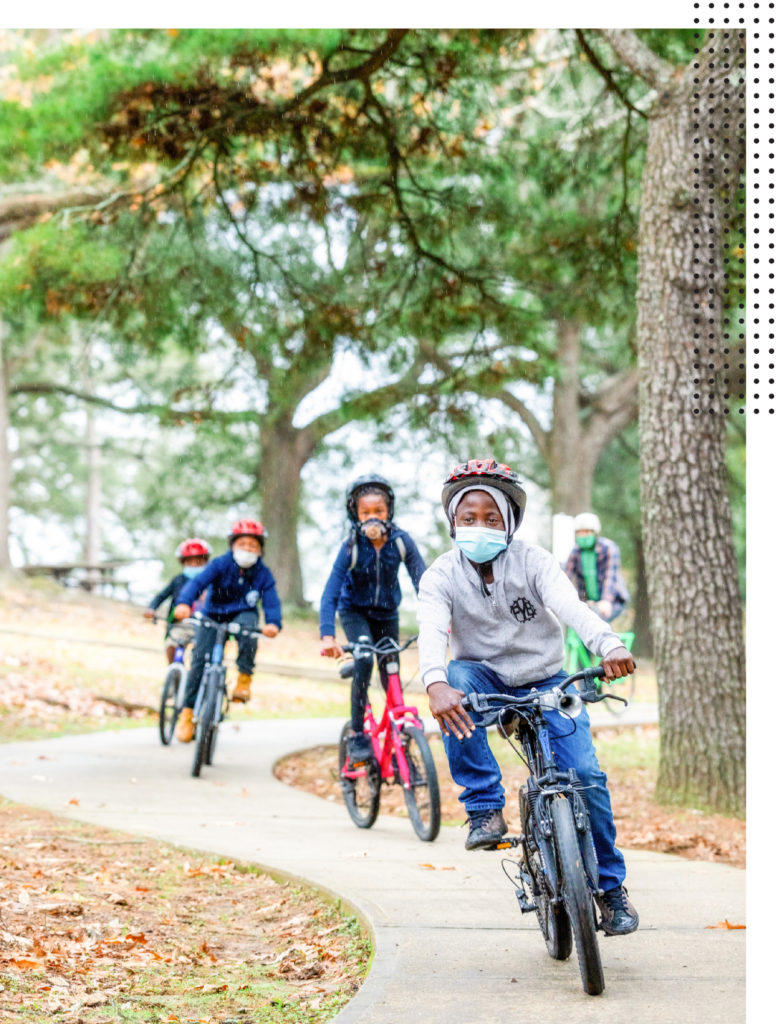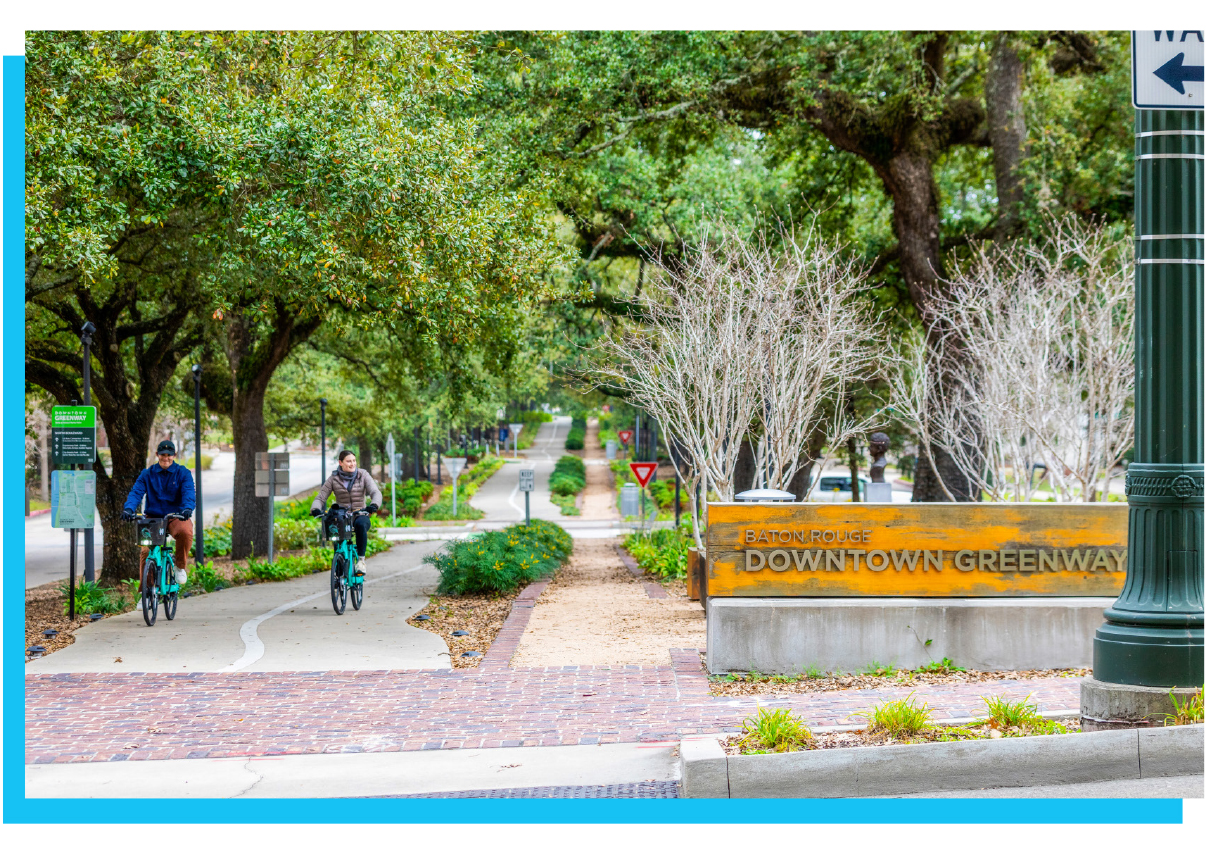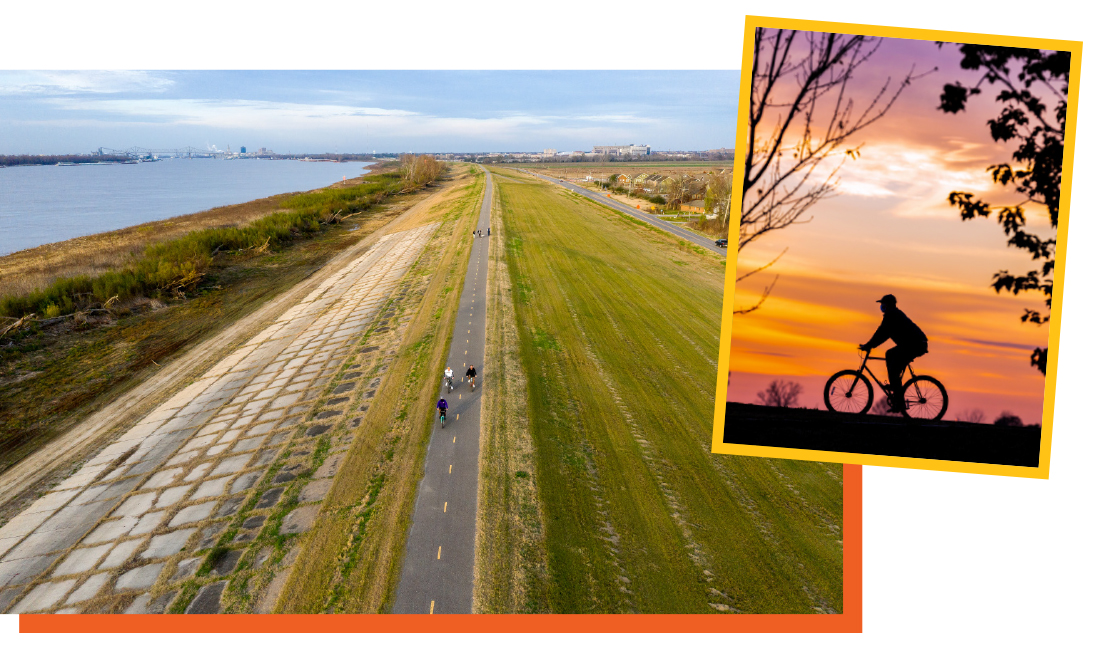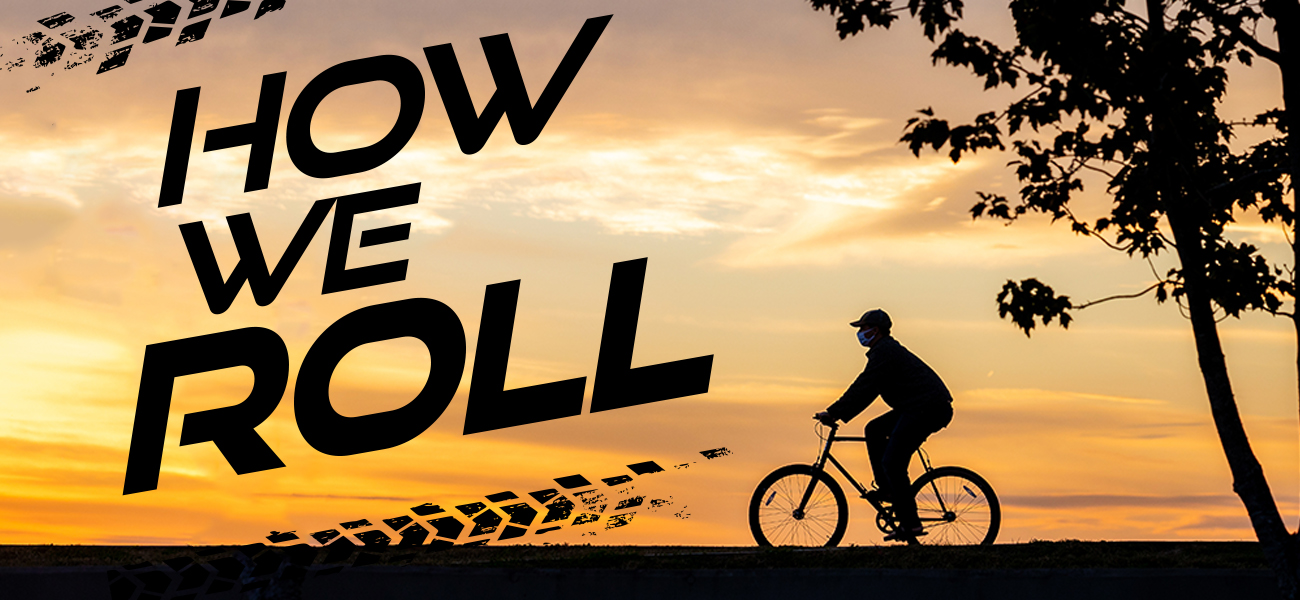
The state of biking in Baton Rouge
Local interest in biking exploded in 2020. What happens next?
Editor’s note: This article has been updated to correct the name and spelling of Capitol Cyclery. 225 regrets this error.
Doug Moore is a longtime advocate for the expansion of Baton Rouge’s bike culture, and lately, he’s noticed something interesting.
“Every time I ride, I see someone else riding,” says Moore, president of Bike Baton Rouge. “That’s a big change from a few years ago.”
For some time, Moore and other bike proponents—public and private—have been trying to shoehorn an alternative transportation network into Baton Rouge’s decidedly car-centric transportation infrastructure.
|
|
Change has been gradual. But a recent wave of momentum could give the movement an adrenaline shot.
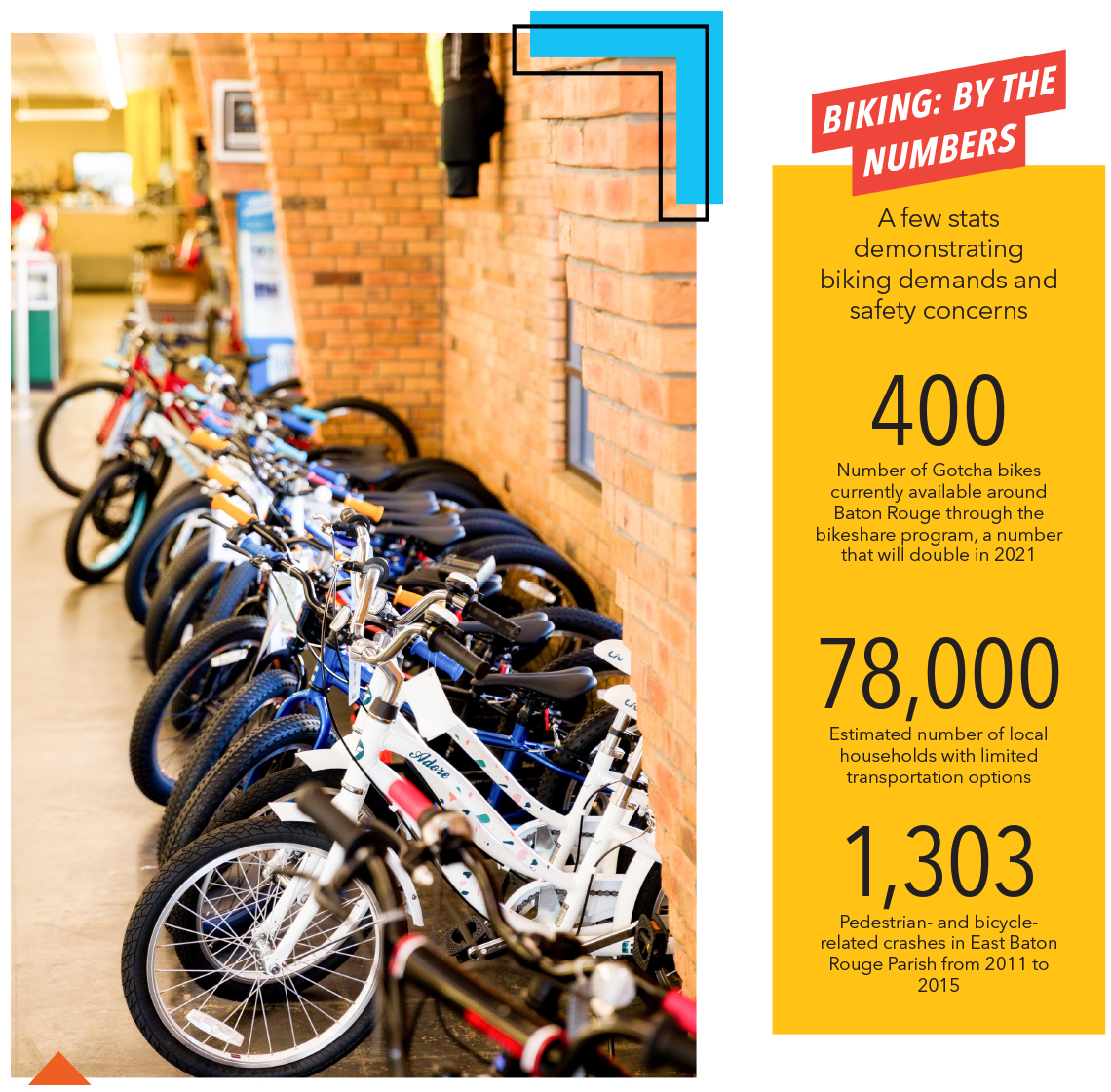
In 2020, Baton Rouge saw the opening or expansion of several new bike pathways, including dedicated lanes on a portion of Government Street, Phase II of the Downtown Greenway and an extension of the Mississippi River Levee Bike Path. In June, the Metro Council passed the Pedestrian and Bicycle Master Plan, which recommends the city ultimately create more than 100 miles of safe on-road bike paths and 250 miles of off-road trails.
BREC, which has spent the last decade adding off-road bike paths, is in the process of expanding its Ward Creek Greenway, part of the planned 10-mile Health Loop. A new trail known as the CMAQ Trail will begin construction in the next few months, connecting downtown to BREC’s Scotlandville Parkway at Monte Sano Avenue. And, a master plan spearheaded by the Baton Rouge Area Foundation to revamp the LSU and City Park lakes calls for dedicated walking and bike paths around this popular recreational area that will link to other bike routes.
But what’s most interesting is that this convergence of projects, some of them years in the making, is playing out against an unexpected backdrop. The coronavirus pandemic caused interest in recreational biking to soar, reaching levels no one could have anticipated.
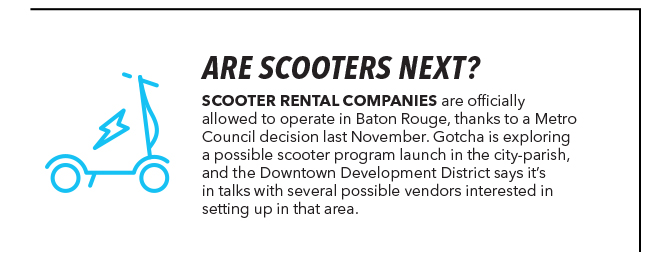 “It was definitely a silver lining. All of a sudden, there was this new enjoyment of the outdoors,” says Dustin LaFont, founder and executive director of the community bike shop, Front Yard Bikes. The shop has experienced its own ongoing boom of retail and repair requests. “People needed space, and riding a bike was just a great way to get out of the house.”
“It was definitely a silver lining. All of a sudden, there was this new enjoyment of the outdoors,” says Dustin LaFont, founder and executive director of the community bike shop, Front Yard Bikes. The shop has experienced its own ongoing boom of retail and repair requests. “People needed space, and riding a bike was just a great way to get out of the house.”
As COVID-19 forced social distancing everywhere and the quarantined beleaguered turned to biking, Louisiana retailers watched their inventories sell out in a matter of weeks. Consumers who couldn’t find new bikes settled for secondhand ones or plumbed their garages for aging models in need of repair.
“We sold an insane amount of bikes, and our repair business was through the roof,” echoes Clayton Weeks, manager of the Essen Lane location of Capitol Cyclery. It’s the largest bike retailer in Louisiana. “We were up to 1,000 bikes on back order per location, with it taking a year to get some of them in. And what we were seeing was happening throughout the country.”
Weeks says global supply chain issues caused a shortage in not just bikes but bike parts, causing a slow-down in bike availability, especially for adult riders, that will be felt into 2021.

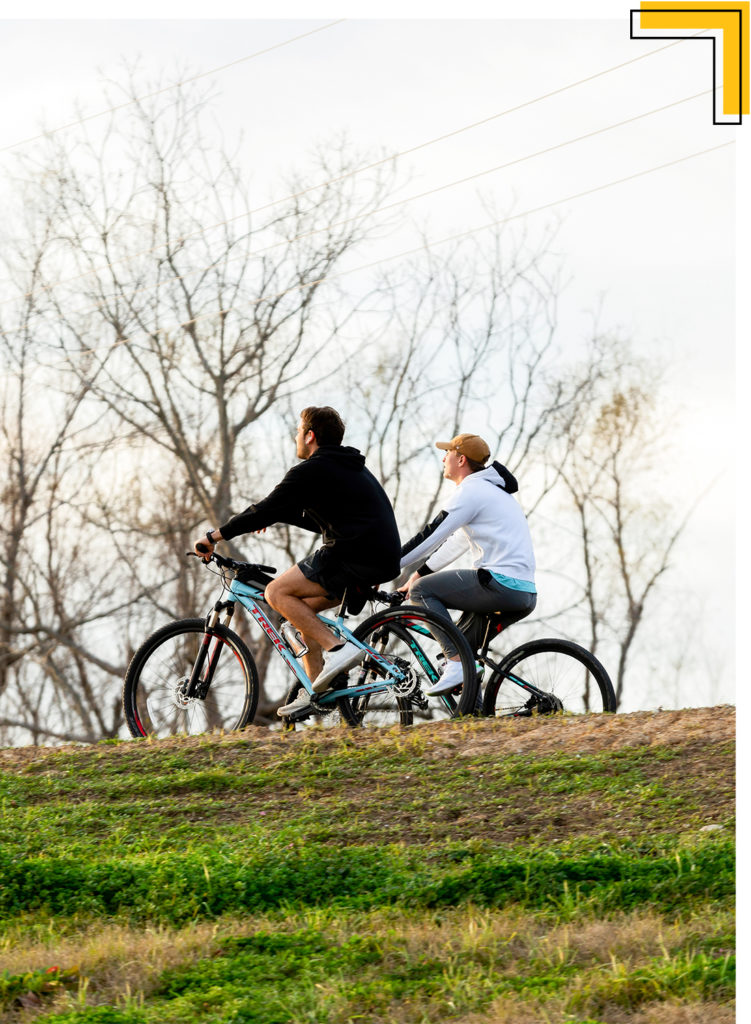
Throughout 2020, some riders opted into Baton Rouge’s recently established bikeshare program, Gotcha. New riders mounted up on the bright blue electric bikes—that is, when rental racks weren’t already emptied.
The app-based program arrived in Baton Rouge in summer 2019. It was performing well when the virus hit. The pandemic triggered usage to double, says local operations manager James Newkirk. From January to mid-December, Gotcha Baton Rouge logged 80,000 trips.
“In 2020, the average number of new users was 1,500 per month,” he says.Gotcha Baton Rouge began with a fleet of 400 bikes placed in stands across downtown, LSU, Southern University and BREC’s City Park. The company will double that number in 2021, Newkirk says. Gotcha also plans to expand in Mid City at locations to be determined, says partnership manager Katie Sims.
It will also eventually add stations along BREC’s Health Loop, a trail system that includes existing and proposed bike paths roughly linking the Pennington Biomedical Research Center and Perkins Road Park to Ward Creek along Siegen Lane all the way to Pecue Lane.
Last spring, riders enjoyed the completion of Phase II of the Downtown Greenway connecting North Boulevard to Expressway Park and the Mississippi River Levee Path by way of a newly lighted route along East Boulevard/TJ Jemison Boulevard. Plans are in the works to eventually link the Greenway to Memorial Stadium to the north, and City Park to the southeast.
Cyclists also took advantage of new paving on an 8-mile stretch of the Mississippi River Levee Path connecting BREC’s Farr Park to the L’Auberge Casino & Hotel.
One of the city’s longest anticipated projects, the Government Street road diet, brought the first portion of bike lanes and sidewalks now installed between South Eugene and Hebert streets. Ultimately, the project will connect 13th Street to Independence Park.

“Things were already happening, but the pandemic resulted in a shift in our biking culture,” LaFont says.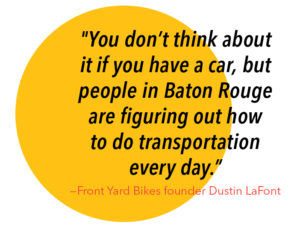
LaFont’s 10-year-old nonprofit will be making big moves this year, too. It has outgrown its existing retail shop on Government Street and its warehouse on Terrace Avenue and will soon move into the former Sarkis Oriental Rug store at Government and Wiltz streets. The new facility will house its retail and repair operations and will function as a nonprofit “youth lab.” (Other nonprofits, including Big Buddy, Line4Line and Humanities Amped, will also hold programming there.)
Working with a low-income demographic, LaFont has a window into the importance of biking to transportation-challenged families in Baton Rouge.
“This year, I’ve had kids walk to us, one from Choctaw and another from Essen, for example, just to get a bike,” says LaFont, whose mentoring program trains young people to fix bikes in exchange for a personal bike of their own. “You don’t think about it if you have a car, but people in Baton Rouge are figuring out how to do transportation every day.”
I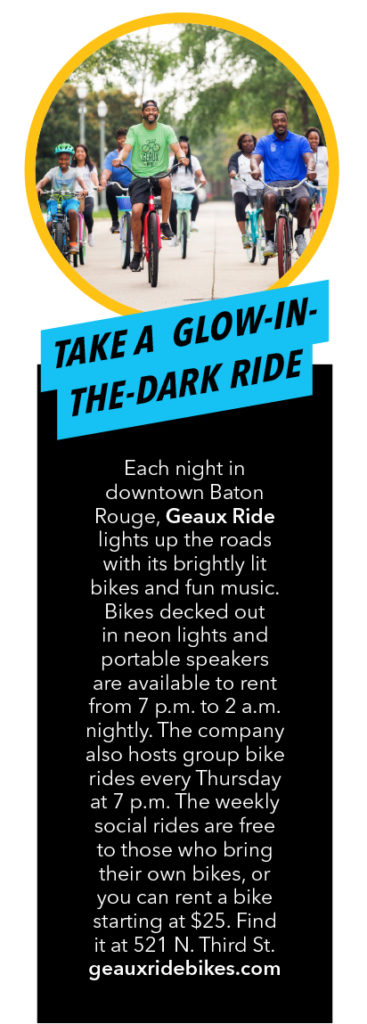 ndeed, according to the new Pedestrian and Bicycle Master Plan, 7% of households in East Baton Rouge Parish have no vehicle available for their daily transportation needs, while 39.4% have just one vehicle. That’s a total of more than 78,000 households with limited transportation options.
ndeed, according to the new Pedestrian and Bicycle Master Plan, 7% of households in East Baton Rouge Parish have no vehicle available for their daily transportation needs, while 39.4% have just one vehicle. That’s a total of more than 78,000 households with limited transportation options.
That begs a big question about conditions, say advocates. Safety, a lack of appropriately timed crosswalks and sharing the road with vehicles traveling at high speeds were all cited as barriers to walking and riding, according to a public survey in the Pedestrian and Bicycle Master Plan.
“There are more people than you think who rely on biking and walking to get around in Baton Rouge, especially in low-income neighborhoods,” Moore says. “Pedestrian fatalities were especially bad in 2020.”
While data about bike and pedestrian accidents is hard to collect, according to Moore, the Pedestrian and Bicycle Master Plan counts 1,303 pedestrian- and bicycle-related crashes in East Baton Rouge Parish between 2011 and 2015. Black riders and walkers sustained 58% of the accidents.
A contributing factor to bike safety—and general enjoyment—in Baton Rouge is that the network of bike lanes and paths lacks connectivity. That’s a big part of the Pedestrian and Bicycle Master Plan, as well as coordinating new trails with the parish’s ongoing MOVEBR transportation infrastructure plan and its Complete Streets Policy, says Whitey Hoffman Sayal, assistant director of urban trails for BREC and chair of the city’s Complete Streets Advisory Committee.
“I think we have the right momentum right now,” Sayal says. “We’ve seen through COVID how important those things are to us as a community. They’re much more than just trails. They help with stormwater runoff. They raise property values. They’re the No. 1 concern of homebuyers—access to pedestrian opportunities. They’re economic drivers and help immensely with safety. And if you’re a person without a car and you need to get groceries, who wouldn’t want a safe place to bike or walk?”
The plan will guide how and when the parish will connect future bike trails, lanes and paths with existing ones. It pays close attention to linking separate projects underway by the city parish, especially traffic signal synchronization and sidewalk construction, with BREC greenways, Sayal says.
“It’s a really big deal that we finally have a plan,” she says. “It gives us direction on where to go next. Biking advocates have been waiting a long time for something like this.”
And advocates are hopeful that 2020’s surge in bike enthusiasm remains over the long-term.
“Early on, we thought this new interest in biking might be a craze. But I think there’s a large number of folks who really enjoy it. It’s going to be a lifestyle change for them,” LaFont says. “We have no idea how the future is going to unfold with the pandemic and the vaccine, but I think cycling is going to continue to be a great way to spend time.”
READ MORE
Play it Safe: Tips for smart biking in Baton Rouge
The Scenic Route: Three easy and photo-worthy bike rides to try around Baton Rouge
Before you “Gotcha”: Things to know before your first electric bike ride
This article was originally published in the February 2021 issue of 225 magazine.
|
|
|
